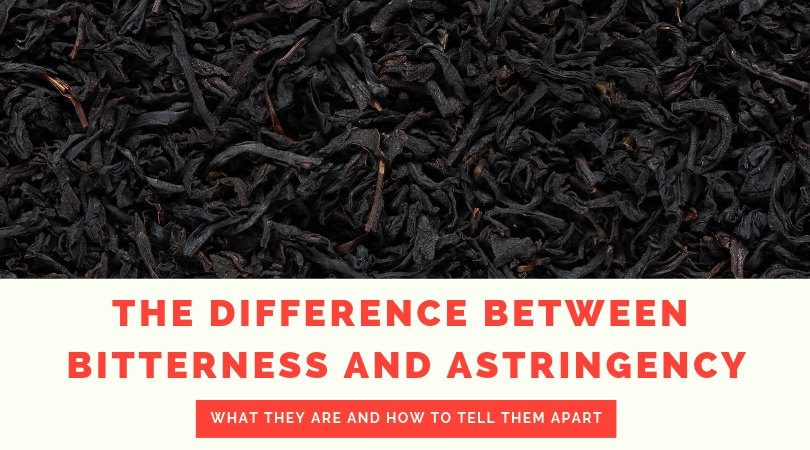When tasting tea it can be helpful to have a set of vocabulary to describe what we are experiencing. It can seem like a whole other language when you are first starting out. Two terms that I see a lot of confusion about are bitterness and astringency. They are
Bitterness
Bitter is one of the primary tastes (alongside salty, sweet, sour, and umami) that we experience when we are eating or drinking. Most people describe it as sharp and unpleasant but everyone’s tolerance levels are different. Examples of things that naturally taste bitter include citrus rinds, Brussel sprouts, hops, and raw cacao.
The tongue map that we all learned in school has been debunked. We now know that there are specific taste receptors that detect bitter throughout the tongue, soft palate, and throat. The TAS2R family of receptors is believed to function as toxicity detectors, warning our bodies if something is potentially poisonous.
There are several substances that make
Astringency
Astringency is a dry, mouth puckering feeling like you might experience from red wine or unripe fruit. Tannins are the main component in tea responsible for astringency. Catechins are converted into flavanoids during oxidation so black tea is often more astringent than other categories.
It is important to keep in mind that astringency is not necessarily a bad thing to have in tea. For some teas, like Darjeeling, it might even be a desired trait. It’s all about balance! A touch of astringency adds a refreshing finish while too much will make for a very unpleasant drinking experience.
Similarly to bitterness, everyone has different preferences when it comes to astringency. I personally don’t mind it at all and in some cases, like dry white wines, I even enjoy it.

How to Tell the Difference
Bitterness and astringency are often associated with each other but they can occur independently. The easiest way to tell them apart is to remember that bitter is a taste while astringency is a feeling. Focusing on and describing mouthfeel is a learned skill. You’ll get better at it with each tea that you drink if you think critically about what you are experiencing. Astringency is most often felt as roughness on the tongue and the roof of the mouth.
Do you enjoy astringency in tea? How about bitterness? I’d love to hear your thoughts in the comments below!

Great post! I agree that bitterness is a flavour and astringency is a mouthfeel (in Singapore, we often use the Singlish term ‘siap siap’ to explain it). I think the fact that astringency and bitterness tend to occur together makes people associate one with the other. I used to have a Taiwan No. 18 black tea that was very astringent but not bitter so I used to use that to illustrate the different! Pity I ran out of that tea :p
Thank you! Siap siap is a term I never really heard before but I came across it a lot in my research for this post. No. 18 black teas are the perfect example for many things 🙂